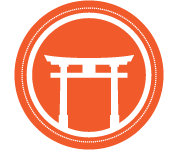Inryoku Volume 6 Issue 9
I once read that to understand aikido, aikido must be practiced as a lifestyle. I wanted to understand aikido. I still do. And so I set about integrating aikido into my life, so much so that it is difficult for me to explain how I apply aikido to my daily life because aikido is my daily life. There is no separation between training, the dojo, and some other self and life. It is all one. I try to apply the principles of aikido to my relationships, my lingering part-time day job, and the management of my dojo and, in return, the practice of aikido opens the world before me.










